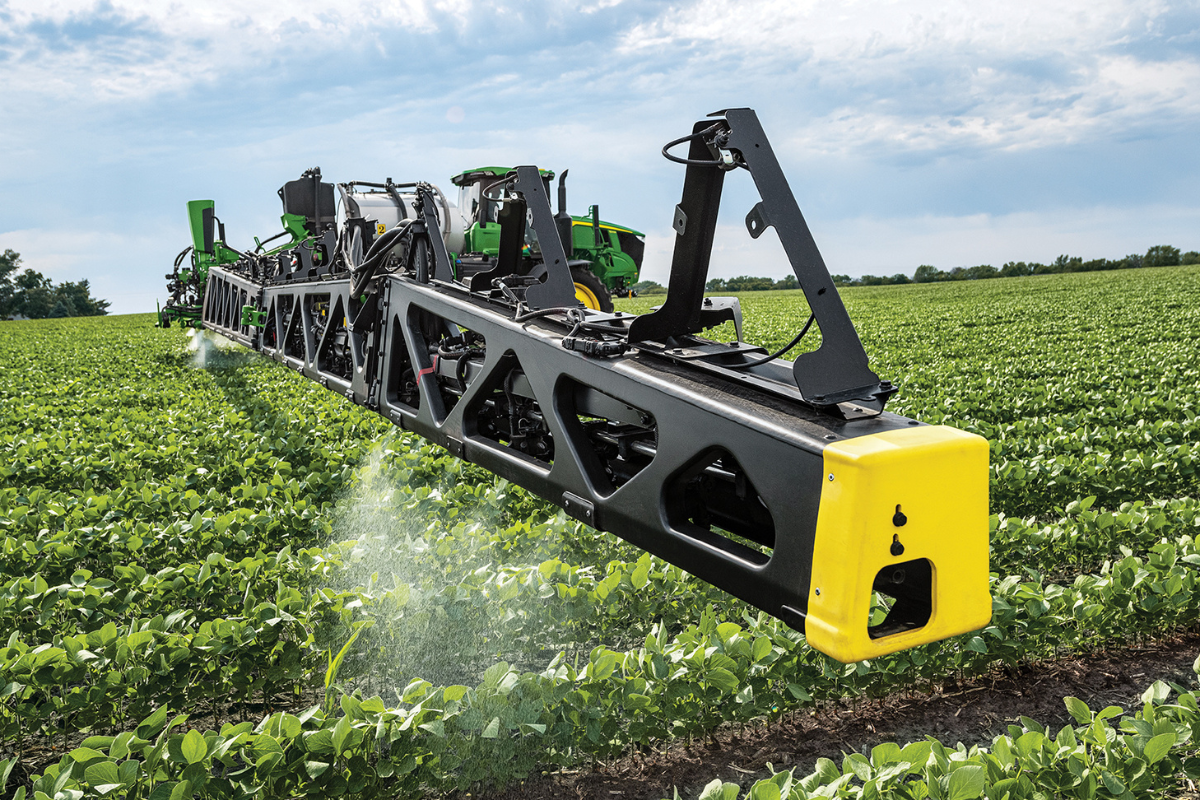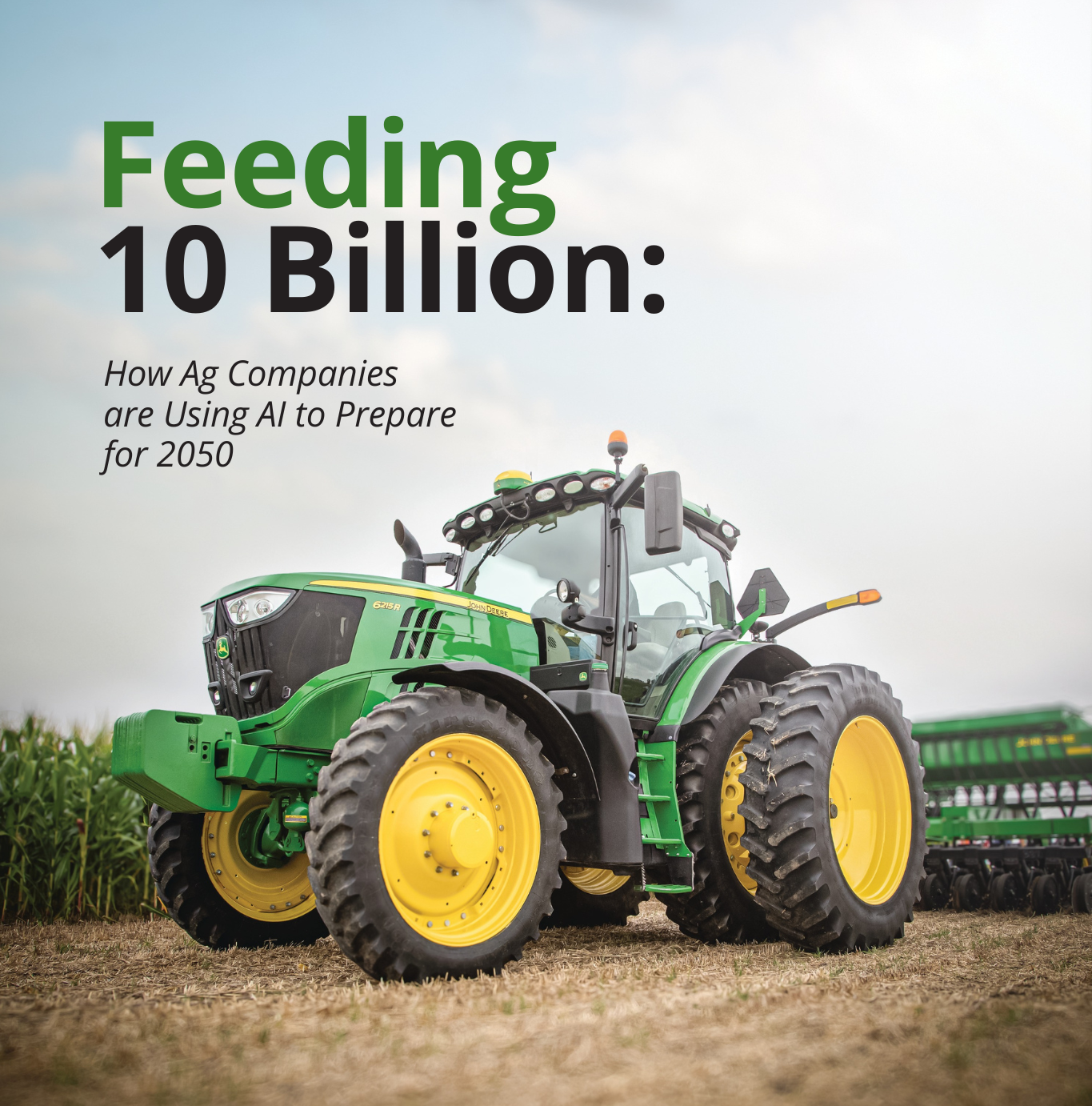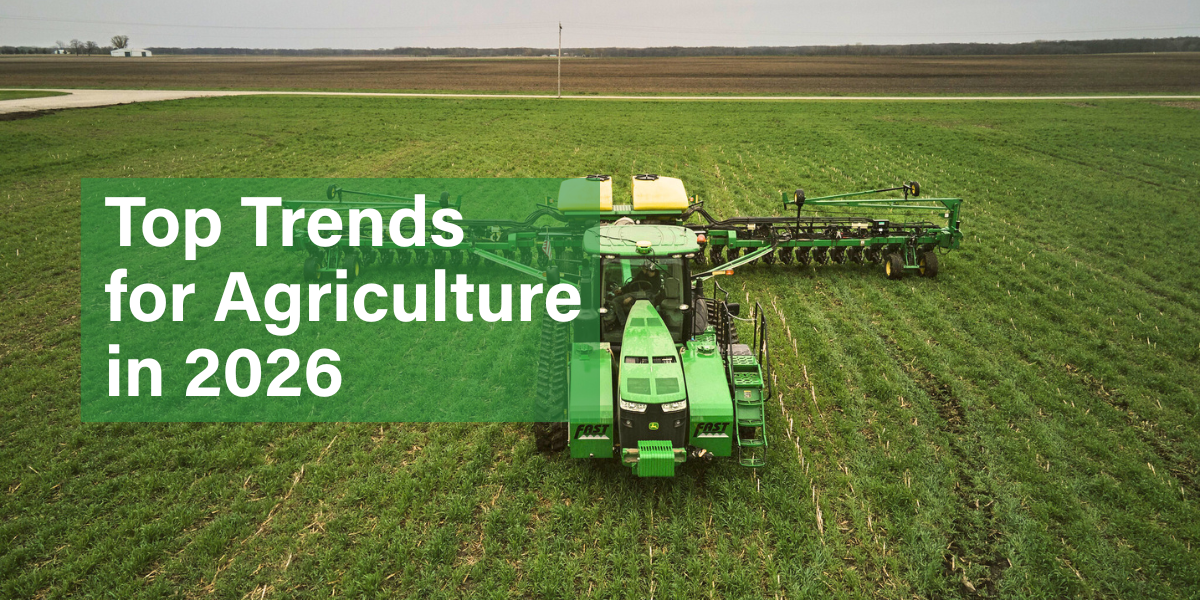By 2050, the world will need to feed 10 billion people — and soybean farmers will be central to that mission. Meeting this demand with fewer inputs, tighter margins and a shrinking labor force requires a fundamental shift in how farming decisions are made and executed. For Illinois soybean producers, that shift is already underway, powered by artificial intelligence (AI).
“This is a defining moment in agriculture,” says Ryan Stien, go-to-market manager for digital agriculture at John Deere. “AI enables farmers to make precise, timely and profitable decisions at scale.”
Unlike past waves of ag tech, AI does more than merely record what’s happening in the field. It also analyzes and responds in real time, learning and improving with every pass.
From After-the-Fact to Real-Time Farming
The shift from reactive to predictive agriculture marks one of the most meaningful evolutions in how work gets done on the farm.
“Instead of a farmer looking at historical data after a job is done, farmers are acting on live data while the job is happening,” Stien explains.
That capability stems from more than two decades of investment in digital tools, sensor technology and machine learning systems. What started with GPS-based precision guidance and remote monitoring has become a fully connected data ecosystem that spans machines, fields and cloud platforms.
Today’s smart equipment not only performs tasks but evaluates how to perform them better.
“Equipment is not just executing tasks but continuously learning and improving how tasks are performed,” Stien says. It’s doing so with a level of accuracy that allows decisions to be made at the plant level.
Laying the Groundwork for Smarter Systems
The rapid evolution of AI in agriculture didn’t happen overnight. “Several milestones have paved the way,” Stien says. He points to early breakthroughs such as sub-inch GPS guidance and real-time data flow between machines and digital platforms. These tools created the foundation for today’s intelligent systems.
Mobile-accessible field management tools further expanded farmers’ abilities to control operations offsite. “The launch and evolution of the Operations Center turns field data into strategic decision-making, helping farmers manage their entire operation from their phone or laptop,” Stien notes, referencing John Deere’s platform for farmers.
The estimated-time-remaining feature is particularly popular within the Operations Center. It uses AI to calculate how long machines will take to finish their current pass, helping farmers schedule labor, prepare grain-handling needs and even reassign machines mid-day to stay efficient.
Add in machine-mounted sensors and camera vision capable of analyzing everything from seed depth to spray pressure and the result is a smart system that executes and evaluates in real time.
Smarter Spraying, Autonomous Decisions
Today, AI is embedded across the farming workflow to assist in a variety of production activities. John Deere’s See & Spray™ technology is a targeted input application system that pairs computer vision with AI to identify individual weeds and apply herbicide only where needed. “Last year, we saw a 59% reduction in nonresidual herbicide use compared with conventional spraying,” Stien says.
Autonomy is another fast-moving front. Tractors equipped with perception systems use camera arrays and real-time analytics to detect obstacles, assess terrain and make basic operational decisions like turning or stopping. “AI models analyze every frame in milliseconds to navigate fields autonomously,” Stien explains.
With the second-generation autonomy precision upgrade kits, select tractor models can be upgraded to operate autonomously. These systems include 16 cameras and real-time AI processing that give the machine 360-degree visibility and the ability to self-navigate in row-crop environments. These capabilities are available for John Deere’s model year 2022 and newer 9R/9RX tractors, its model year 2020.5 and newer m8R and 8RX tractors, plus select tillage tools from 2017 on.
Taken together, these innovations and others like them represent a broader shift away from tool-driven farming and toward intelligence-driven systems.

Mobile-accessible field management tools have enabled Illinois farmers to manage their entire operation from their phone or laptop, paving the way for emerging AI technologies capable of real-time data analysis and predictive decision-making. Photo credit: John Deere
AI in the Cab and in the Cloud
For many Illinois soybean farmers, AI is already at work on their operation, even if it’s not labeled that way. Simple features such as machine alerts rely on predictive algorithms and live machine data to optimize operations. “Many farmers are already using AI, whether they realize it or not,” Stien says.
JDLink® connectivity already provides automatic data flow between connected machines and the Operations Center. Sensors and computer vision empower machines to understand the environment, including fine layers of detail such as seed depth and nozzle pressure.
In the next one to two years, Stien expects AI to further enhance how farmers manage variability in the field. AI systems are poised to deliver sub-inch execution with less human oversight in areas such as autonomous tillage, seed placement, sprayer nozzle adjustment and combine calibration.
Off the field, those same tools support better management and logistics planning. “AI supports better decision-making and planning, helping farmers analyze outcomes and coordinate labor and machine use more effectively,” he adds.

JDLink connectivity keeps data flowing between connected machines and John Deere’s Operations Center. Photo credit: John Deere
Who’s Making the Decisions?
One of the biggest questions AI raises is not just how work gets done, but by whom. Will farmers remain in the driver’s seat, or will machines permanently take the wheel? The reality, in Stien’s view, will be more collaborative than some might expect.
“Traditionally, a farmer would rely on personal experience and gut instinct to make thousands of decisions across the growing season,” Stien says. “AI now gives farmers the ability to pair that intuition with real-time, machine-generated insights that are faster and often predictive.”
Whether through alerts on a mobile dashboard or automation in-cab, today’s AI-enhanced ag ecosystem offers farmers more options for how they manage their operations, not fewer. “We believe AI should amplify the farmer’s knowledge and decision-making, not override it,” he says.
For farmers just beginning to explore AI-enabled tools, the entry point is often digital field management platforms. “A great first step is to start with the Operations Center — a free tool that serves as the digital gateway to managing your operation,” Stien says.
That familiarity can help build comfort with layering on more advanced tools, whether sensor-guided steering, automated turning capabilities or smart spraying systems. Local equipment dealers can also play a key role in helping producers match tech options to their unique operational needs.
Looking Ahead: The 2030 Farm and Beyond
Stien sees the next five years as a period in which current AI trends will only accelerate. There will be more autonomy, more predictive insights and more integration across systems. That also means a greater need for data fluency on the farm.
“We still need people who understand agronomy and machinery,” Stien says. “But we also need people who can interpret data and fine-tune decisions across the farming operation.”
With every new insight, farmers are gaining the tools to make better decisions that are faster, more efficient and more sustainable.
As global demand for staple crops such as soybeans increases, AI offers a way to produce more with less land, less labor and fewer inputs.
“AI gives farmers the ability to manage their operations at a plant level, optimizing decisions across every acre, every pass and every machine,” Stien says. “AI doesn’t change the spirit of farming; it supercharges it. With the combination of next-generation technology and the deep generational know-how of farmers, the future of agriculture is incredibly bright.”

AI-enabled See & Spray™ technology allows farmers to identify and spray individual weeds, ensuring they apply herbicide only where needed. Photo credit: John Deere
Recent Articles
See how ISA is driving innovation in soybean production by investing in farmer-led research and equipping growers with tools for the future.
By
What's in store for farmers in 2026? Illinois Field & Bean sits down with some of Illinois Soybean Association’s Corporate Partners to find out what they’re anticipating in the new year.
By Ashley Rice-Haddon, Illinois Field & Bean Magazine, Lead Writer

